Dylan Clark, producer on The Batman, reportedly told Christopher Nolan that director Matt Reeves was “going to try to beat” Nolan’s accomplishments with the Dark Knight trilogy. That is no small boast, considering that critics and journalists have likened Nolan’s three Batman films to the work that Francis Ford Coppola did with The Godfather, producing a trio of pulp films that succeeded at “drilling into the national mood.” At the very least, it’s good that Clark and Reeves are ambitious.
Then again, maybe there is something to Clark’s boast. After all, Clark served as a producer on the three recent Planet of the Apes prequels. He previously collaborated with Reeves on the last two films in that trilogy, Dawn of the Planet of the Apes and War for the Planet of the Apes. There is a solid argument to be made that these three films accomplished something comparable to the first two Godfather films or the Dark Knight trilogy, capturing the soul of the moment in celluloid.
This would have seemed absurd at the time. The previous attempt to revive the Planet of the Apes brand had resulted in Tim Burton’s much-maligned remake of the original film, starring Mark Wahlberg. It was the rare movie that was bad enough that even turning a significant profit didn’t turn it into a franchise. Early reports of plans for a prequel starring James Franco were met with derision by the press, and understandably so. The eventual positive reviews even seemed surprised.
The recent Planet of the Apes movies are big bombastic blockbusters. They are a triumph of a particular style of filmmaking. Even in practical terms, the character of Caesar is one of the most impressive technical accomplishments of the past decade. Animated by WETA and played by Andy Serkis, Caesar is perhaps the first computer-generated character to support an entire live-action franchise. The movies only work because Caesar, the central ape, feels so tangible and real.
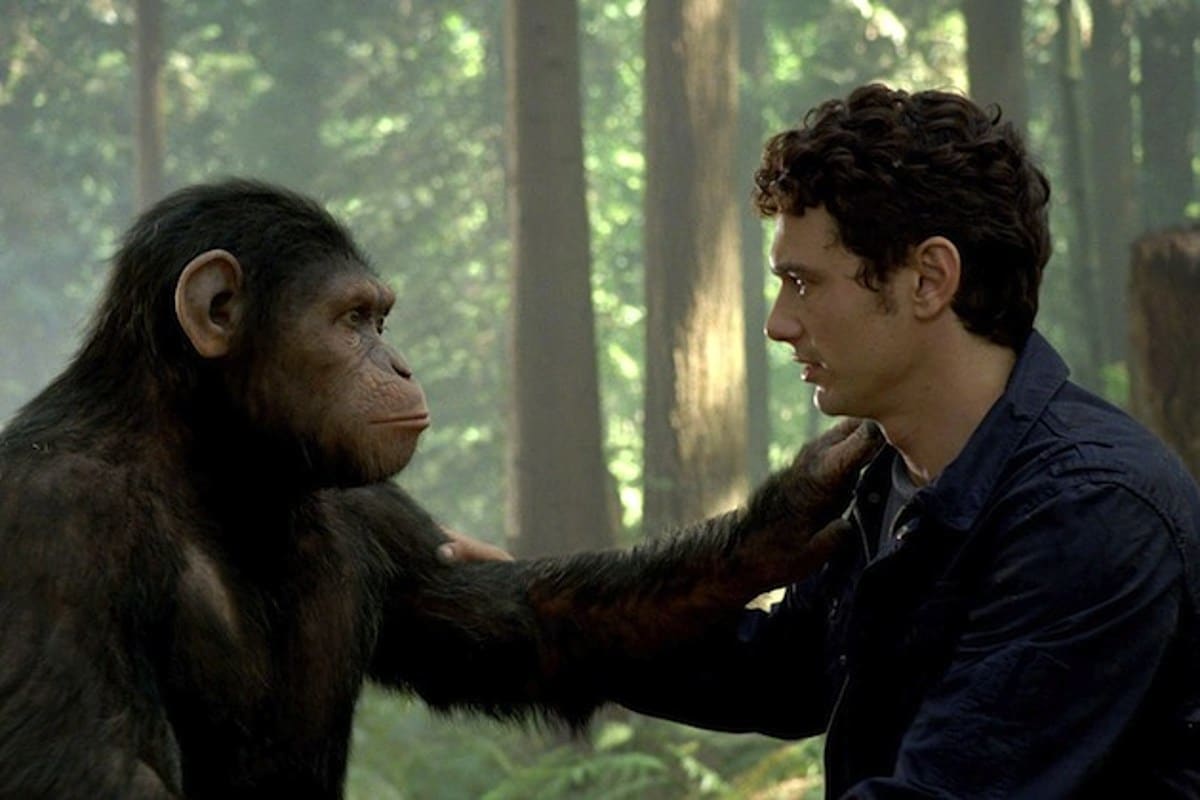
The three films are consistently impressive. Even the first film in the series, Rupert Wyatt’s Rise of the Planet of the Apes, has its share of memorable moments. Shot for significantly less than the next two films, Wyatt still delivers. Part of this is through holding back on big set pieces until the movie’s third act. Part of this simply comes down to being judicious in what is shown and how, as in a scene in which the leaves rustle as the apes move above a suburban neighborhood.
In some ways, working on a lower budget perhaps adds to the charm of Rise, especially when watched in quick succession with Dawn and War. As shot by Andrew Lesnie, who had worked with Serkis on the Lord of the Rings trilogy, Rise has a very saturated color palette. However, those colors often appear washed out and overexposed. The effect is to suggest a faded memory or recollection, a hint of nostalgia. Appropriate for a prequel, Rise offers a snapshot of a time before.
This contrasts with the work of Reeves and cinematographer Michael Seresin on Dawn and War. These are darker movies, both literally and figuratively. They are movies that are often shot in shadow. It is too much to suggest that they are desaturated. Many of the most striking images in Dawn and War make effective use of color: sunset over the ocean, flames burning, and even just the forest itself. However, there is a clear visual evolution across the three films.
Touches like that help the recent Planet of the Apes trilogy to stand apart from so many modern blockbusters. The triptych avoids the “intangible sludge” effect that defines so much contemporary film and television, especially the more dominant blockbusters. It also avoids two of the other major trends that have warped modern big-budget filmmaking, by embracing a sincere earnestness and by using its nostalgia in interesting ways.
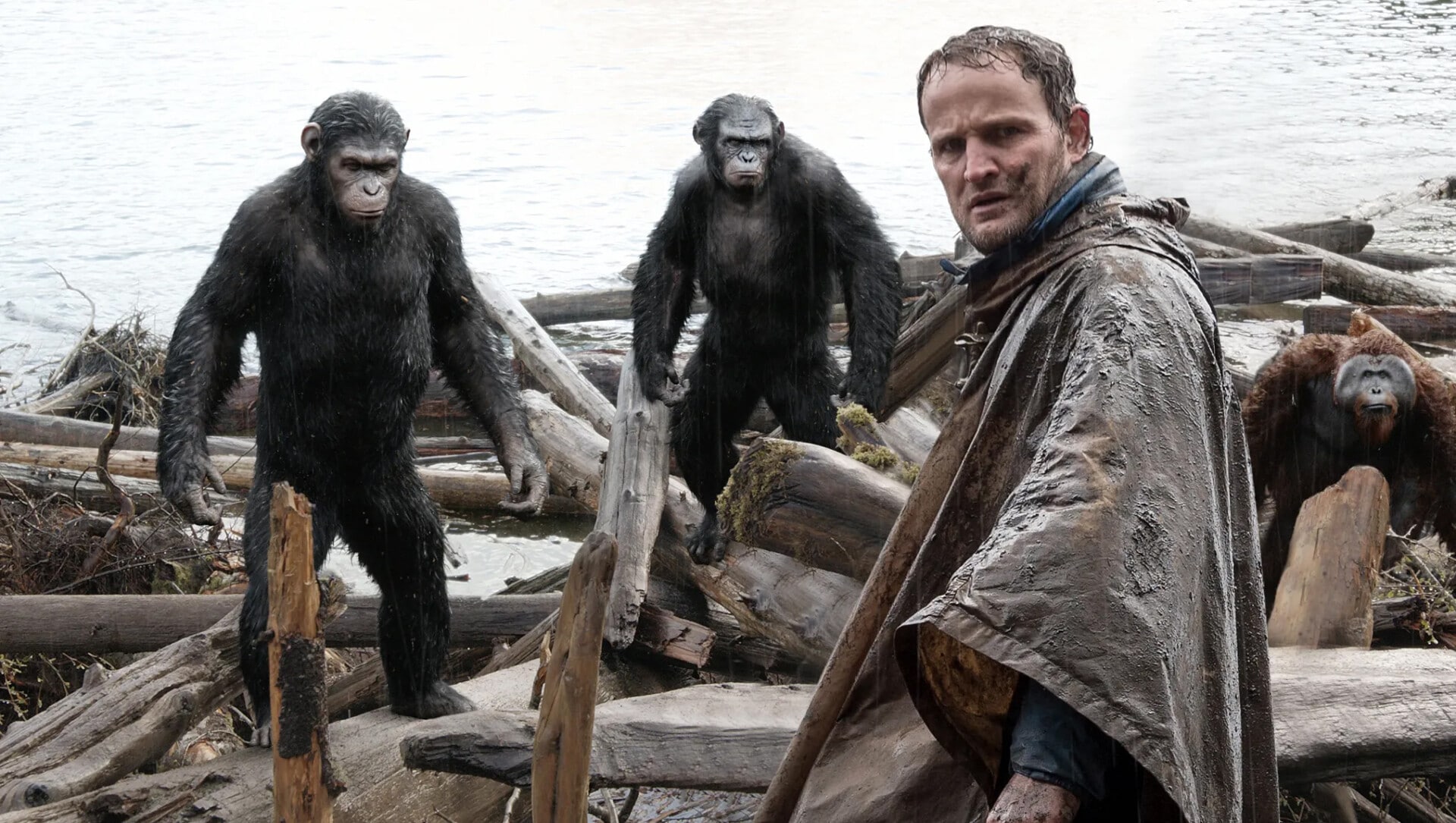
Modern blockbusters are often coated in a layer of protective irony, as if terrified that cynical audiences might mock them for daring to take themselves seriously. It often feels like these films are racing to make the jokes before even the most cynical Twitter user can open the app. There is a sense that the worst thing a movie, particularly a populist genre movie can do, is take itself “too seriously,” so the trick is to take nothing seriously.
The Planet of the Apes prequels take themselves entirely seriously. They ask the audience to invest emotionally in a cast dominated by computer-generated monkeys. Caesar is allowed to be a genuinely tragic figure. Rise asks the audience to empathize with him as he bonds with, and separates from, his owner Will (Franco). War trusts the audience to feel Caesar’s anger and grief when his wife Cornelia (Judy Greer) and his son Blue Eyes (Max Lloyd-Jones) are killed.
It works. The films manage to create a genuine sense of humanity and pathos, never undercut with goofy one-liners or stupid jokes. Dawn even plays out as a grand tragedy, signposting the inevitable betrayal of Caesar’s friend Koba (Toby Kebbell) and the breakdown of the fragile peace between man and ape from its opening scenes. These are movies that treat the audience with respect and trust them to be capable of emotional engagement without layers of protective self-awareness.
The trilogy is also clever in its use of nostalgia. Rather than treating the original Planet of the Apes as an easy source of references, the trilogy riffs on it. Rise gives its two biggest callbacks to a supporting character, Dodge Landon (Tom Felton). The first big reference, screaming “it’s a madhouse!”, is in a wide shot and almost buried in the sound mix. His second big reference, telling Caesar to get his “stinking paws” off him, is immediately overshadowed by Caesar’s verbalized response: “No!”
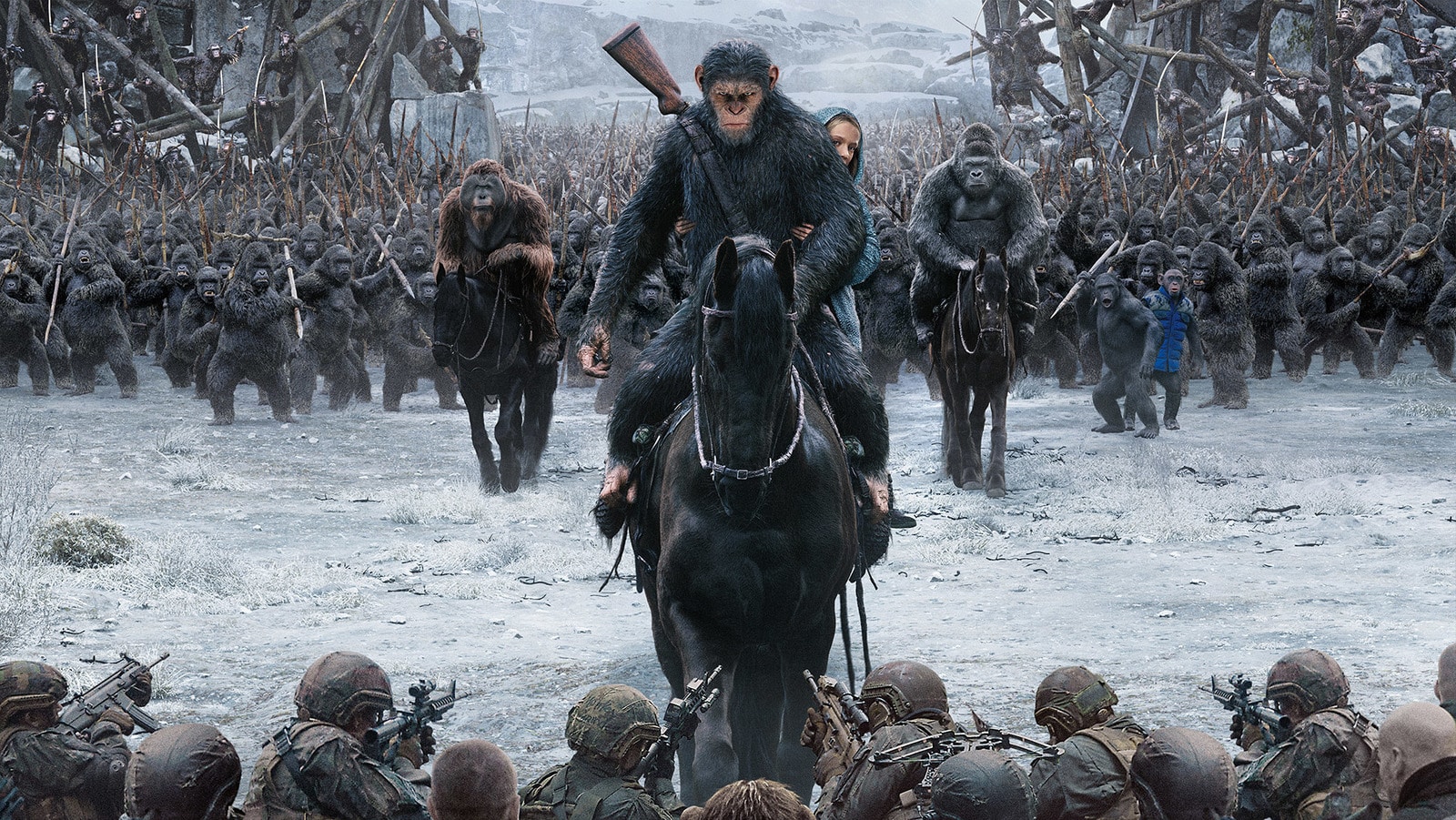
More to the point, Rise uses its callbacks to Planet of the Apes to underscore a central thematic point. Audiences watching the torture that Caesar receives at the animal sanctuary will recognize the echoes of the abuse inflicted on Taylor (Charlton Heston) in the zoo in the original film. These cycles of violence repeat. The society that these apes build will, in its own way, be a twisted reflection of the society that brutalized and tormented them. History repeats.
The Planet of the Apes prequel trilogy used nostalgia to speak to the contemporary moment. Rise was released in the midst of a wave of broader nostalgia for the 1960s. Mad Men was in the middle of its run. Pan Am would premiere just a month later. Rise was sandwiched almost perfectly between J.J. Abrams’ two Star Trek reboots, featuring the 1960s cast. This reflected the mood of the era, with President Barack Obama often likened to President John F. Kennedy, even by Ted Kennedy.
The original Planet of the Apes arrived in 1968, a year that many point to as the “peak year” of the decade. It was a year of unrest and chaos: an escalation in the Vietnam War, the deaths of Martin Luther King Jr. and Robert Kennedy, riots across the country, unrest at the Democratic National Convention, and the election of Richard Nixon. Even the hippies had moved on from San Francisco. With all that, an upside down society ruled by apes didn’t seem so unreasonable a future.
The three recent prequels exist in conversation with that. It is notable, for example, that Rise and Dawn are both set in and around San Francisco, the American city most closely tied to the decade in popular consciousness. War is deliberately evocative of Vietnam, even riffing on Apocalypse Now. More than that, War cleverly hybridizes several prominent film genres that were in decline by the late 1960s: the western, the biblical epic, even the prison break movie and traditional war film.
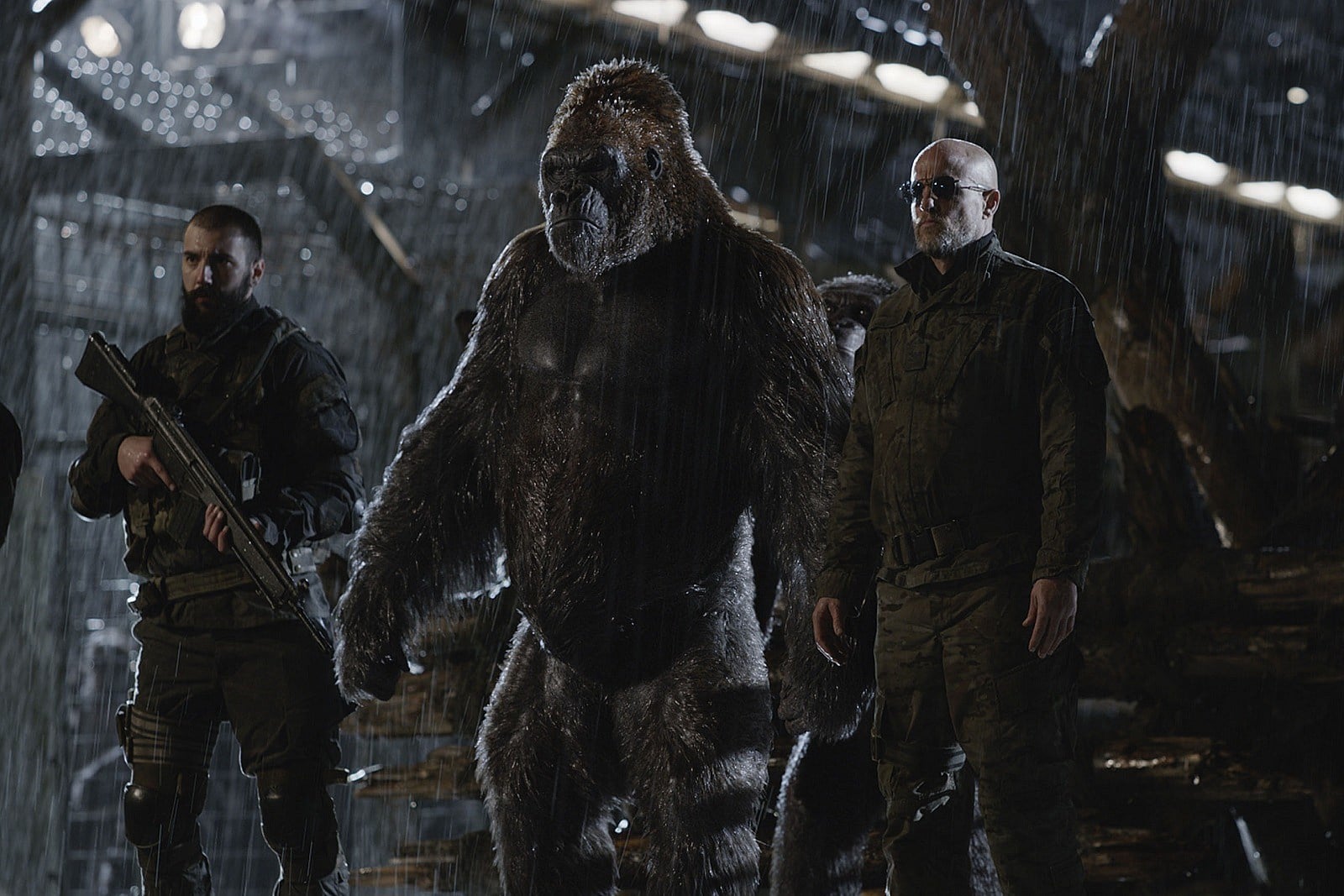
As such, the prequels thematically tie back to the original Planet of the Apes, metaphorically dramatizing the end of the 1960s. In doing so, the films mirror what was happening in American culture during their release, a turbulent era that many commenters likened to the chaos of 1968. The trilogy imagines a civilization in decline and asks how society will respond to a rapidly changing social order. In doing so, the triptych becomes a vital reflection of the era in which it was made.
The three Planet of the Apes prequels are not subtle, but there’s charm in that. Using talking monkeys, the films explore themes related to cycles of violence, systems of oppression, and the question of whether modern society is fundamentally broken. The imagery is often evocative. In Rise, the apes fashion the bars on a zoo enclosure into spears that they use as weapons. In Dawn, Caesar fights for the society he wants to build at the top of a skyscraper still under construction.
Released in the first year of the Trump presidency, War introduces Col. McCullough (Woody Harrelson), who is obsessed with building a wall in the hopes of keeping outsiders away. Production schedules mean the parallels were accidental, but they are uncanny. Maybe there was something in the air. “No matter what you say, eventually you’d replace us,” McCollough warns Caesar. A month later, white nationalists would generate headlines chanting something similar in Charlottesville.
The result is a triptych of movies that, like Francis Ford Coppola’s first two Godfather films or Christopher Nolan’s Dark Knight trilogy, manages to capture something of the American soul on screen through the lens of pulp storytelling. In metaphor and mood, the three Planet of the Apes movies touch a raw nerve in the national psyche. If that’s not enough, they also have apes riding horses through fire while shooting machine guns. That has to count for something.

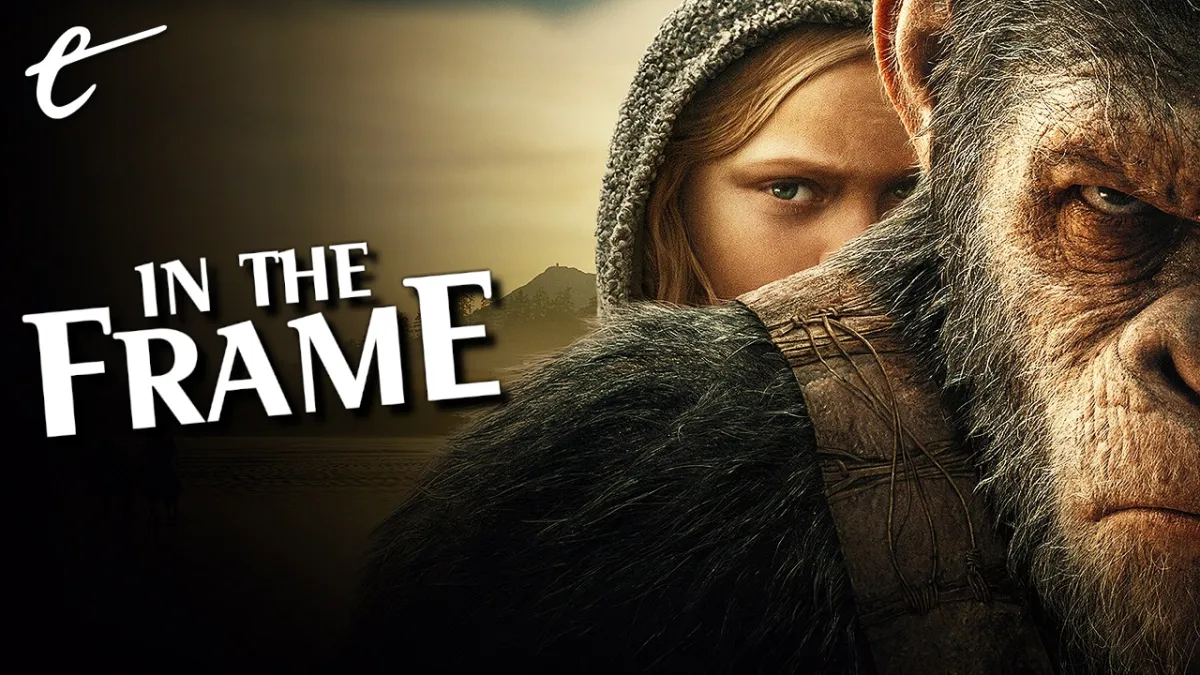




Published: Jan 28, 2022 11:00 am